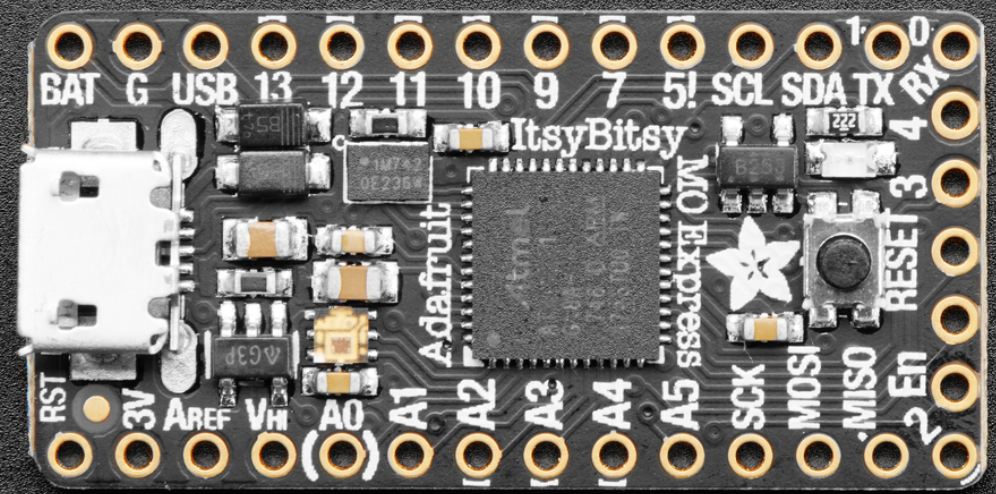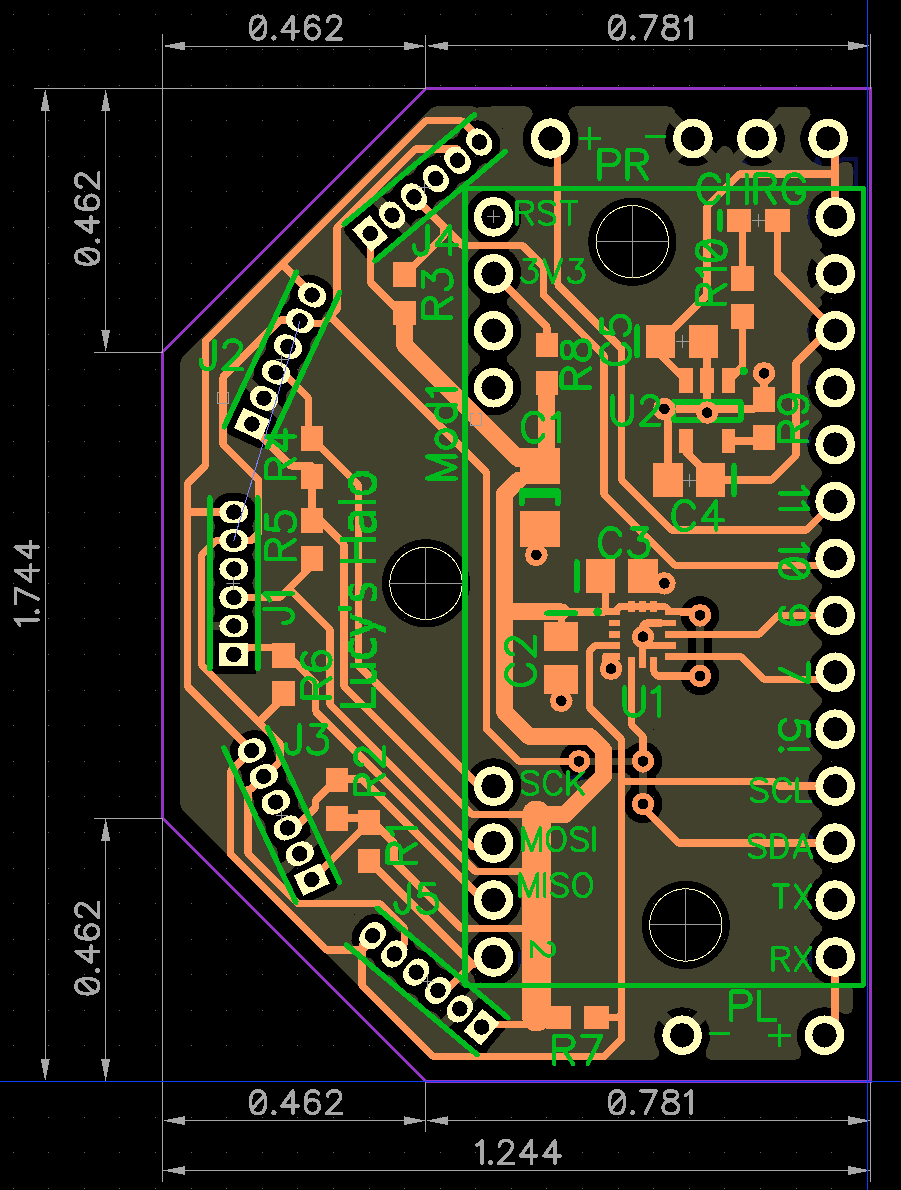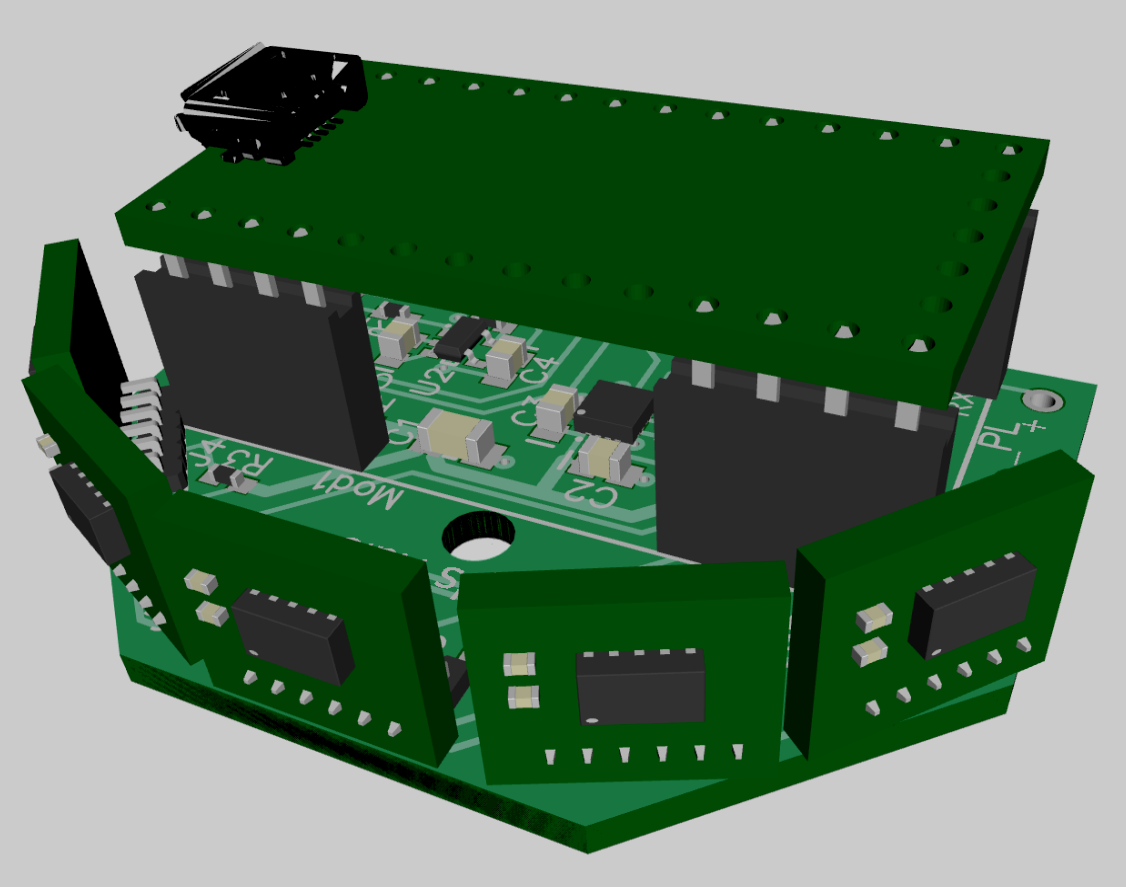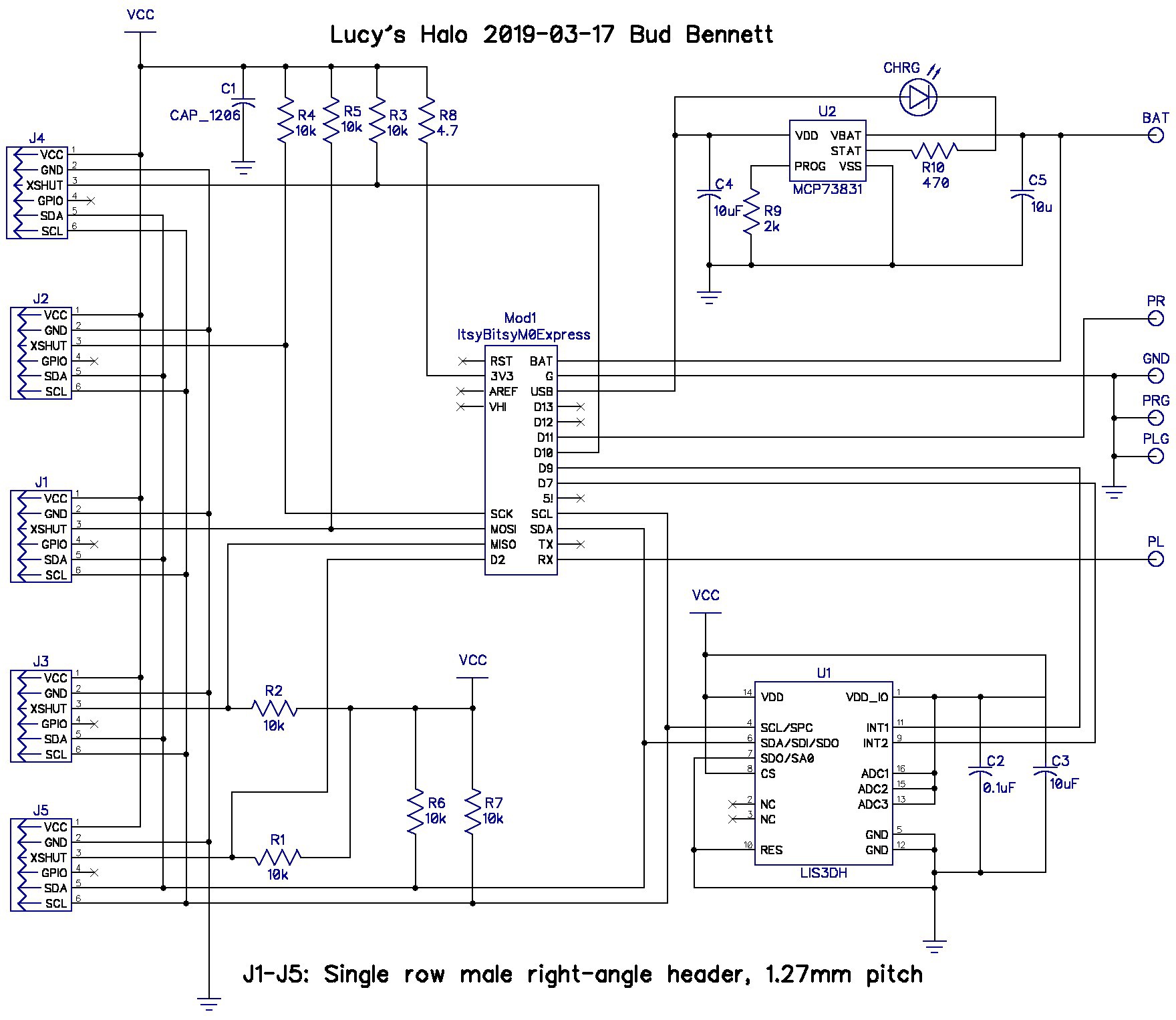I went to the Adafruit website to order another Arduino Feather M0 Express unit to have as a backup. While meandering around their site I stumbled upon a better, smaller, Arduino unit: the Itsy Bitsy M0 Express. The Itsy Bitsy is quite a bit smaller, and almost half the cost of the Feather (so I bought two of them.) It has nearly all of the functionality of the Feather -- even the CircuitPython stuff -- but lacks the battery charging feature. I'm hoping it draws a bit less current too.
Getting it to Fit:
The problem with the Itsy is that the power and battery pins are located at one end of the board and the I2C and digital pins are at the other end. This means that the entire board has to be accommodated within or under the halo motherboard.

The best solution that I could imagine involved placing the Itsy on top of the motherboard with the USB connector accessible from the right side.

Not all of the pins are needed -- the analog pins and a lot of other pins related to the battery management or ADC reference. Pins at the corners are required to securely mount the board. There are three mounting holes to secure the motherboard -- two of them underneath the Itsy. There are female headers (two 4-pin and one 14-pin) between the boards so that the Itsy can be removed to gain access to the mounting holes. The headers raise the Itsy about 0.5 inch -- slightly higher than the VL53L0X daughterboards. I'm also thinking that male pin headers could be used instead if the two holes under the Itsy were just alignment pins and the one hole outside the Itsy would have a screw. This approach would lower the height of the Itsy considerably.
Since there is no jack for the battery on the Itsy there are now pads for the battery inputs on the motherboard at the right side. I also added a battery charger (U2 -- MCP73831) to the motherboard. The charge indicator LED is located near the BAT pad. There is not much room to accommodate a disconnect switch for when the battery becomes over discharged -- planning to use a protected cell and hope that it works.

I let the layout guide the schematic.

The ItsyBitsy is now included on the mother board schematic.
Motion Sensing:
The halo must turn off when Lucy is not moving or if it is tilted to an extreme position indicating that she is sleeping. Therefore I added a simple accelerometer to the system. The LIS3DH should do the job. I wanted to implement a 6-axis motion sensor, but the only one available in CircuitPython is a bit too expensive. This complicates the motherboard assembly since the accelerometer package is a 14-pin QFN. (At least it doesn't have an exposed pad.)
Too Far Too Fast:
I think I'm getting way way ahead of myself with this latest design. The AliExpress sensors are stuck in U.S. customs, so I haven't even been able to test the multiple-sensor capability yet. I will probably just sit on this while the rest of the project catches up to it.
 Bud Bennett
Bud Bennett
Discussions
Become a Hackaday.io Member
Create an account to leave a comment. Already have an account? Log In.